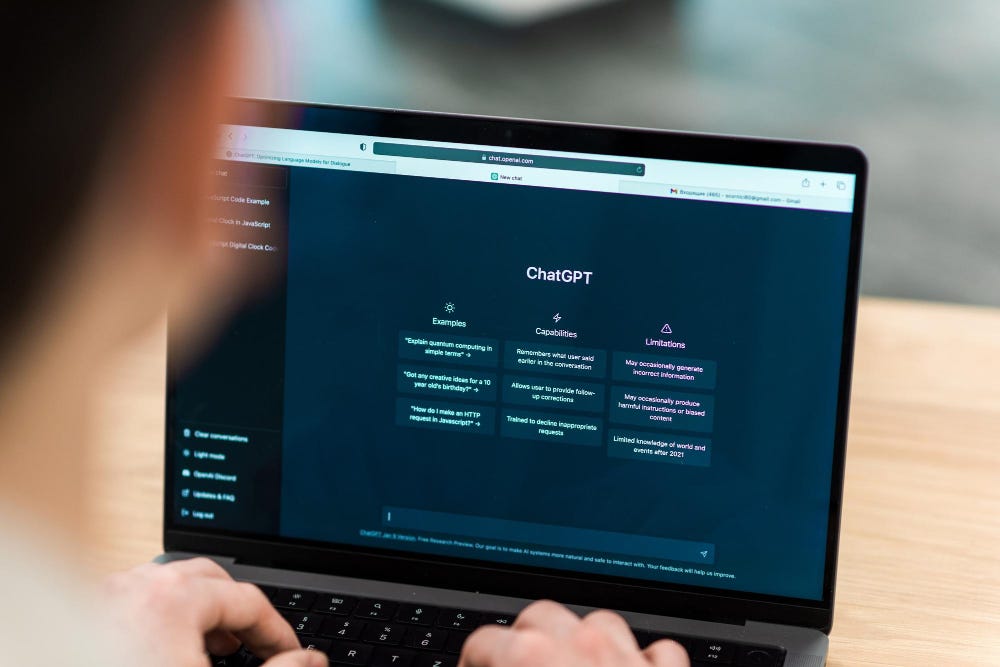The Missing Manual of Generative AI: Chapter One
Beyond the Hype - A Human Perspective on AI
Last week, while scrolling through my news feed, I was bombarded with headlines about DeepSeek - market disruption, geopolitical tensions, data security concerns. Yet there I was, quietly working with various AI models to improve documentation, analyze data, and solve real business problems. The irony wasn't lost on me. While the world debated about AI's impact on stock markets and national security, I was experiencing its true value in the most practical ways - making my daily work better, faster, and more thoughtful.
This stark contrast between the media narrative and my daily reality made me pause. The gap between how AI is portrayed and how it actually transforms our work has never been wider. While headlines swing between extreme optimism and fear, those of us working with AI daily are discovering its true value - not in market disruption or geopolitical advantage, but in the mundane yet crucial tasks that fill our workdays.
Beyond the Hype - A Human Perspective on AI
In the flood of AI headlines and technical jargon, we've lost sight of something crucial: how to actually use this technology effectively. After spending thousands of hours collaborating with various AI models across different projects, I've observed a growing disconnect between futuristic promises and practical applications. It's time to address the elephant in the room - we're so caught up in what AI might become that we're missing what it already is.
What makes any technology truly useful? From my decade of experience in technology innovation, it comes down to two fundamental criteria: it must have meaningful, productive applications, and it must come with proper best practices for implementation. Think of technology adoption like learning a new language. Having a dictionary (capabilities) isn't enough - you need to understand the cultural context and daily usage patterns (implementation practices) to truly become fluent. AI is no different.
My journey wasn't always smooth. Initially, I treated AI like a magic solution, throwing vague requests and expecting perfect results. The breakthrough came when I started approaching it like onboarding a new team member - setting clear context, establishing communication patterns, and building on previous interactions. This shift in perspective changed everything.
Meeting Your Digital Colleagues
Through daily interaction with various AI models, I've discovered something fascinating - they exhibit distinct personalities, much like human team members. This isn't just anthropomorphizing; it's a practical framework for effective collaboration.
Take Claude, for instance. In my daily work, Claude embodies what I call the Sage archetype - wise, analytical, and ethically grounded. When I'm architecting systems or reviewing complex code, Claude's careful consideration proves invaluable. It doesn't just write code; it explains logic, considers edge cases, and maintains clean documentation.
Perplexity manifests as the Scholar - a dedicated researcher connecting dots across vast knowledge landscapes. Its strength lies in rapidly processing information and providing evidence-backed insights. When I need to validate market assumptions or technical approaches, Perplexity's research prowess ensures thorough, fact-based analysis.
Gemini brings the energy of the Creator - imaginative and innovative. Its conversational style and adaptability make it perfect for brainstorming and exploring uncharted territories. When I need to generate test datasets or explore creative solutions, Gemini's innovative spirit provides fresh perspectives that often challenge conventional thinking.
While I've focused on these models from personal experience, the market offers many others - ChatGPT, Deepseek, and more. But specific models matter less than understanding how to collaborate with AI effectively. ChatGPT demonstrated people want natural AI interaction; Deepseek showed the value of specialized expertise. Each adds its own flavor to the ecosystem.
Rethinking Technical Concepts
Let's strip away the technical mystique from common AI terms. "Iteration" isn't about machine learning cycles - it's conversation flow, the natural back-and-forth of collaborative thinking. In my experience, the best results come from treating AI interaction as a dialogue, not a series of commands.
"Distillation" isn't a technical process but the art of finding clarity through dialogue. I've learned that just as you would refine ideas through discussion with colleagues, each interaction with AI builds upon previous insights.
And "prompt-tuning"? It's simply learning to communicate effectively with different personalities. Just as you'd adapt your communication style when working with different colleagues, understanding how to frame questions for different AI personalities leads to better outcomes.
The Human-AI Partnership
The breakthrough in my journey came when I stopped viewing AI as tools and started treating them as specialized team members. Success doesn't come from mastering prompts or understanding model architectures - it comes from orchestrating strengths effectively.
Remember: Technology should adapt to human nature, not the other way around. While headlines focus on AI's potential to transform industries or replace jobs, my daily experience shows a different truth - AI's most significant impact comes from augmenting human capabilities in practical, everyday scenarios.
Think of it like mentoring a promising intern. You wouldn't expect them to immediately understand every nuance of your work environment. Instead, you'd guide them toward their strengths while helping them develop new capabilities. The same principle applies to working with AI.
From Understanding to Action: A New Chapter in AI Collaboration
In the upcoming chapters of the Missing Manual series, I'll share how two of my established frameworks - the Ideation Circle model and the Clarity Compass - have evolved in the age of AI collaboration. These frameworks weren't created for AI; they were born from years of experience in innovation and design-thinking. I've written about their original applications in design thinking and innovation processes in my previous articles, which I encourage you to explore for a complete understanding of their foundations.
But before we dive into their AI evolution, let this sink in: the future of AI isn't written in technical specifications or model architectures. It's written in the stories of meaningful partnerships that enhance human potential. When we strip away the technical mystique and understand AI through human patterns, something remarkable happens - technology becomes an extension of human creativity and capability.
What you'll discover in the next chapter is how these proven frameworks have naturally embraced AI collaboration, creating new possibilities for innovation and productivity. It's a testament to how timeless principles of human collaboration can evolve with technology while maintaining their core essence.
Welcome to the future of work – it's more human than you might expect.


